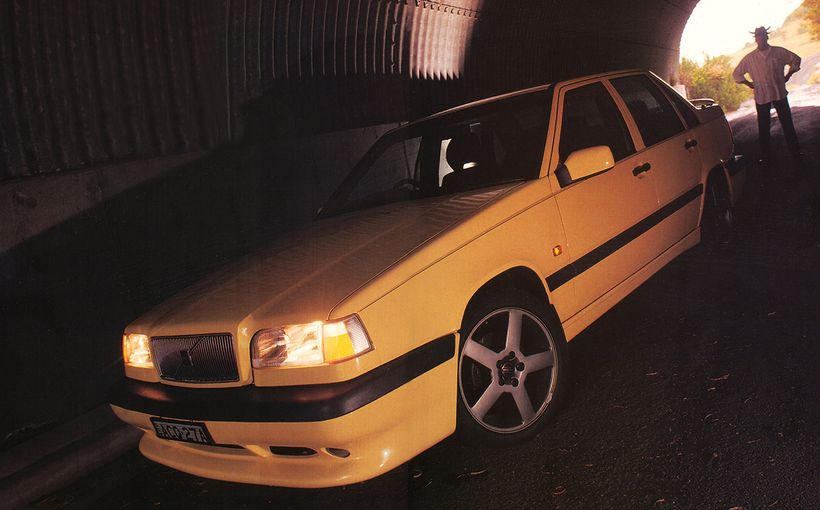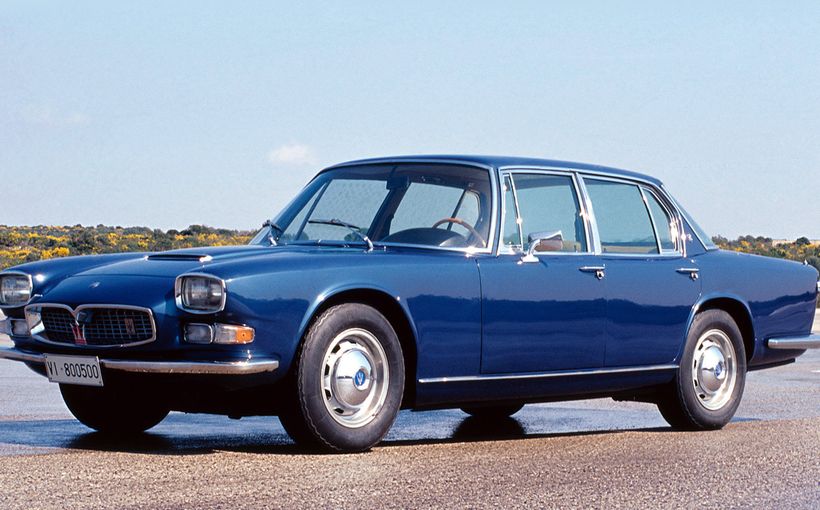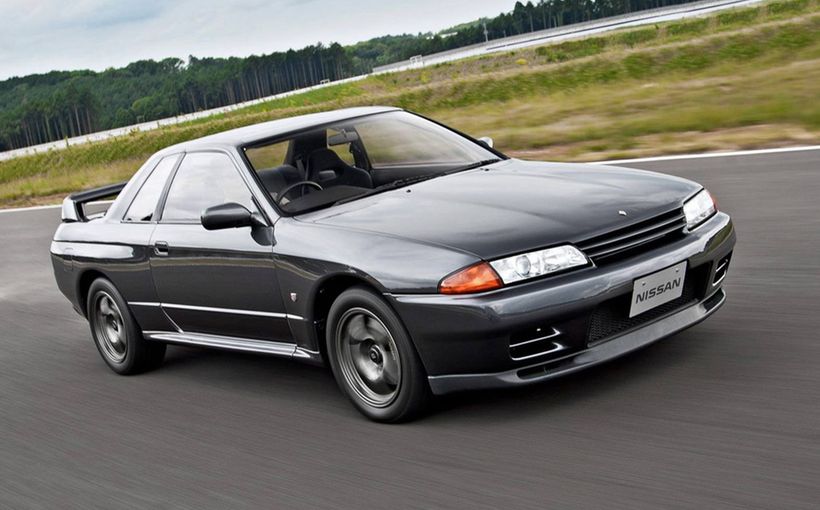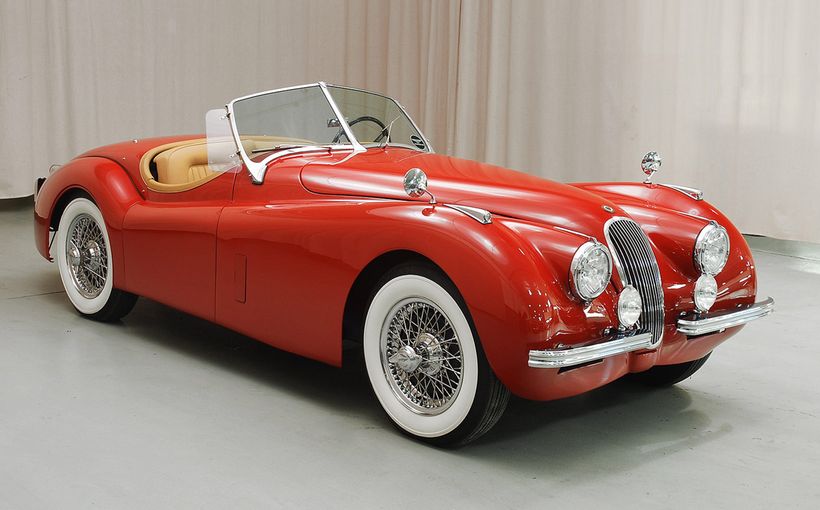Volvo 850-Series: the first focused Volvo since the 122S

When the Volvo 850 was first shown to the world in 1991 it must have seemed to many critics about a decade behind its time. This was the company’s first front-wheel drive model. It used an in-line five-cylinder engine and had a drag coefficient of 0.32, even if it looked – to invoke that familiar anti-Volvo joke – as if it still had to be removed from the box.
Looks aside, does all this ring a bell? In October 1982 Audi revealed its epoch-making new 100 sedan. It, too, was a medium (large by European standards) executive class sedan, front-driven, powered by an in-line five-cylinder engine with a coefficient of drag claimed to be 0.30 but in production reality closer to 0.32.
There is no evidence that the thinking at Volvo was influenced by that extraordinary Audi, except that the 100 drove the world’s designers back to their drawing boards to make aerodynamic efficiency a priority where previously it had barely been a consideration with plenty of late 1970s/early 1980s cars afflicted with numbers in the mid to high 40s.
The Volvo product planners had not been determined to use a five-cylinder engine. Perhaps their ideal would have been a straight six, but such a unit would not have been workable in the transverse configuration; Audi mounted its five longitudinally. At the Australian media launch of the 850, project manager Lars Erik Lundin noted that ‘Cadillac gets a 4.6-litre V8 in transversely.’ According to Lundin, it was the safer installation: ‘There is no way of predicting how an engine will behave in an impact. But we know how the crumple zone will behave. Mounting the engine across the car gives more crumple zone. Honda says it has changed from transverse to longitudinal in the Legend for better weight distribution, but…’

I, for one, needed no selling on the joys of five, having owned a 1984 Audi 100 a year or so earlier. The in-line five is more compact than a V6 and takes care of all its exhaust needs on the one side. It provides excellent performance with class-leading economy. And, thank goodness, those swinging Lars, Rolfs and Pehrs chose to leave the exhaust note alone. Like the Audi, the 850 produced a delightful snarl. The new, sexier Volvo sounded like a deeper-throated but less throbby Audi 100.
The Volvo executives went to a lot of trouble at that launch. On the screen we saw this new biggish Volvo, looking frankly like any other biggish Volvo, albeit with the skin stretched more tautly over the muscle, a more purposeful crouch, and a promise of extra energy in the rounded frontal area and six-spoke alloys. And as I watched those flashing images – the 850 GLT slicing through snow, racing down bitumen hills and through lush countryside, accelerating, slowing, turning, sometimes sliding – I thought, ‘yes, it still looks crook, but I’d better wait until I drive it, before I decide. You don’d need to be beautiful to sing like an angel.’
Indeed, the Volvo 850 represented – represents all these years later – a sublime case of the folly of judging by appearances. Yes, it looked – looks – like a 1980s Volvo in that stubborn unique kind of style, but it felt more like a softened BMW than, say, a 760 GLE (the Volvo that was launched soon after the Audi 100).

This front three-quarters angle conveys the true Volvo character with just a suggestion of sporting intention
To be fair to the design, the 850 had been a shelved project. It was, said Lundin, ‘the car we had in our back pocket’. When the 760 was being readied for market amidst concerns about another fuel crisis, here was the leaner, edgier, thriftier car Volvo could introduce. But, as it happened, the 760 was a sales success and demand for the aged pipe’n’slippers 240-Series remained strong, so the 850 project assumed a quieter priority. Had it been ready for, say, 1986, it would have received an even more enthusiastic welcome from the press and Volvo customers.
Looked at in this context, it’s no surprise that a car developed in the early to mid-‘80s should have looked like Volvo’s idea of an aero-age executive sedan. If it was influenced by the Audi 100, so was every other product of its type in that era, from Sierra and EA Falcon to Alfa 164 and VN Commodore.
At the October 1992 local launch two variants were offered. To slip beneath the luxury tax threshold was the less powerful, less lavish GLE at $45,690. Like the $65,990 GLT it had the 2,435 cc engine but with a 10-valve head rather than the 20-valves. Maximum power was 103 kW with torque of 206 Nm, compared with the GLT’s 125 and 220 respectively. The GLE took 11 seconds to reach 100 km/h on its hypothetical way to a V-Max of 190, while the GLT promised 9.6 and 205.
Between this pair came the GLE Special Equipment for a premium of $12,300. It added climate control in lieu of manual air –conditioning, alloys with 60-series tyres, leather steering-wheel and fast glass. In typically thoughtful Volvo style, the entry level model got electric adjustment for the distant mirror, while the SE got it for both.

Could this interior belong to any car other than a Volvo?
The interior was spacious and comfortable. It was also highly versatile. Volvo’s excellent child booster seat was incorporated in the rear armrest and suited kids aged from three to 10. There was a ski-port to carry long items and, additionally the backrest was asymmetrically split. Wonderfully, the backrest of the front seat folded forward onto the cushion to yield a very long storage space.
On the road the 850 pretty much lived up to the hype. Handling was near neutral on the road with mild understeer when hustled. It is not always wise to let journos loose in a new car on a racetrack, for more reasons than one. Few production models feel either especially adroit or fast. On the little circuit in Norwell, which at the time was the Benson & Hedges/Frank Gardner complex where one frequently saw BMWs keeping fast company, the 850 displayed strong and generally terminal understeer. On the straights it felt underpowered but sounded fabulous. Greater mid-range torque would have been much appreciated. I never sampled any of the subsequent hotter versions on a track.
It did seem that all the passion that had remained hidden within Volvo’s Gothenburg headquarters had found expression. ‘Is this the best Volvo you make?’ I asked Anders Lofgren, then general manager of the car division in Australia, and the answer was an immediate ‘yes’ (never minding that the flagship 960 was almost twice the price!)
The 850 was the first Volvo to incorporate the company’s Side Impact Protection System (SIPS). At the time, this was probably the next best thing to having a roll cage fitted to your car.
Perhaps surprisingly, at launch only sedans were offered at first but the wagons duly followed a year later, in all three specification levels. There was though even more exciting news than a new Volvo wagon. At the same time Volvo Australia introduced the T-5 in both sedan and wagon form. The world’s racetracks lay in waiting…

The T-5’s turbocharged – yes, ‘T’ for Turbo, ‘5’ to denote the number of cylinders – engine made 166 kW and 300 Nm. A further twelvemonth on, bonanza! In any colour you liked as long as it was Cream Yellow was the T-5R in sedan guise only but bearing gifts of 177 kW and 330 Nm, a wild child in the Volvo garden indeed.

Cream Yellow, unique to Volvo, suits the limited edition T5-R superbly, which is just as well because buyers got no choice.

There seemed to be no stopping those cardigan-wearing Scandinavian engineers from jiving around their offices. The 1996 850R was almost a cut price M3, priced at $79,950 to the Bee-Em’s $131,750. Unlike the low volume T-5R, this one was a regular production model. Manual variants received engine tune of 185 kW at 5600 rpm backed by 350 Nm from 2400 rpm through to 5600. It could do the zero to 100 sprint in 6.7 and was electronically limited to 250 (like any good BMW). It had 17-inch alloys with 45-series Pirelli P-Zeroes and it showed that Volvo meant business. Mark this one down – maybe especially the wagon version – as a future collectible; better still, cellar one now. New, the so-cool wagon cost just $2K extra.

I had the pleasure of driving an 850R sedan from Sydney to Brisbane and back. My only criticism was that the steering lacked the level of communicativeness expected in such a car, so I didn’t quite covet one. Looking back, I had felt the same reservation about every hot Volvo I drove in the eighties and nineties. The 1983 760 Turbo, for example, was a disappointment despite all the promise of its turbocharged 2.3-litre four. The difference was that the 850R never felt soft or underdone and the firm ride was a ready reminder that here was a sports sedan on a mission.

In summary, the 850 represented a marked improvement over the boring 740 and 760 models. It was a kind of return to the form with sharpness, vigour and sense of sporting purpose largely absent from the time of the 122S’s disappearance from Volvo showrooms.


There’s a case to be made that Volvos look better in the snow.










